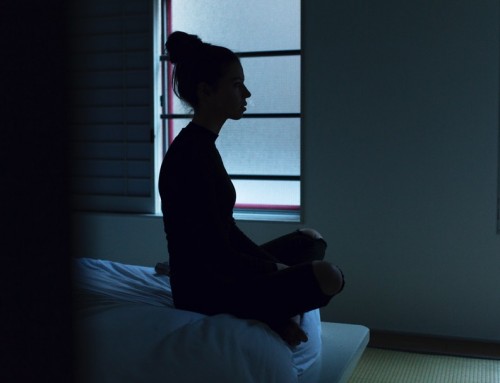
Lower back pain is the leading cause of disability worldwide. The discomfort felt from back pain can affect your performance at work. It can also keep you from enjoying the physical activities that make you happy and keep you in shape.
Many cases of chronic lower back pain are caused by a condition called sciatica. It’s characterized by pain that starts at the sciatic nerve (the longest nerve in the human body) and radiates throughout the hips and down the legs.
Sciatica is caused by a number of things, primarily spinal disk herniation. Other causes include spinal stenosis, degenerative disc disease, or other injuries such as a pelvic fracture. Pregnancy can even cause sciatica.
While many people require medical treatment for the condition, there are also home sciatica therapy techniques that will help you lead a more comfortable life.
Let’s go over six.
1. Daily Stretching
Not only is stretching one of the best ways to decrease sciatic pain, it’s one of the easiest and most convenient. Simply by starting each day with 20 minutes of light stretching can ease tension and pain for the rest of the day.
It’s important that you start slowly until you build up your flexibility. You don’t want to risk injury by overstretching muscles too quickly.
Stretching your hamstrings is great sciatica therapy. Although it can be painful at first, you’ll quickly adapt and be able to hold the positions for enough time to effectively relieve pressure on your sciatic nerve.
You should also look into other sciatic stretches and incorporate them into your routine.
Yoga is also very beneficial to the lower back and will help increase flexibility and range of motion throughout your entire body. If you don’t have time to join a yoga class, there are plenty of instructional videos available online for beginners.
2. Keep Moving
Do you sit at a desk all day at work? In the evenings do you find yourself sitting on your couch either watching TV or working on your laptop? This type of lifestyle is quite common.
Unfortunately, you’re not doing your back any favors by sitting so much. This is especially true if your sciatica is a result of a herniated or bulging disc.
To combat this, make a conscious effort to stay moving. On your lunch breaks, go out for a walk instead of remaining seated the entire time. Plan walks in the evening after dinner and avoid the couch as much as possible.
Download a fitness tracker app and set distance goals each day. This seems like a minor change to your routine, but it’ll have a big impact on how you feel.
3. Hot and Cold Therapy
A big part of home sciatica therapy is managing the pain and discomfort you feel. Sometimes the pain is constant and the last thing you want to do is take painkillers every three or four hours.
A heating pad is a great alternative. This is a convenient solution, as you can use this at home and also if you work in an office. A hot bath is also a good way to apply heat.
Heat helps loosen the muscles in your lower back. It’s also great for increasing circulation.
For some people, ice is a better solution when it comes to easing the pain. This is great for reducing inflammation as well. Use an ice pack for about 15 minutes at a time and avoid having to take so many anti-inflammatory pills.
4. Your Pillow Matters
Do you wake up feeling intense pain in your lower back? Do you toss and turn because your sciatic pain keeps you from getting comfortable?
The position in which you sleep has a big impact on your spine. A great home sciatica therapy technique is to alter and support your body’s position while sleeping.
You can do this with memory foam pillows designed to support your neck throughout the night. Another great tactic is to sleep with a pillow between your legs. This helps reduce stress on your lower back and stabilizes your pelvic area.
In addition to your pillow, the type of mattress you have has a huge effect on your back. A firm mattress as opposed to one with little support is recommended.
5. Use Natural Painkillers
Although over-the-counter or prescription painkillers may help with the discomfort associated with sciatica, they’re potentially harmful to your liver. Prescription pain medication is also addictive if taken for an extended amount of time.
Instead, try some natural alternatives to help with pain and inflammation. Many of these remedies are herbal and easily obtained.
Devil’s Claw is great for sciatic pain. It also has anti-inflammatory properties.
Other anti-inflammatories include turmeric milk and ginger tea. Valerian root is great for easing tension and promoting muscle relaxation.
If you still need to take painkillers, that’s fine. Just try to supplement some of your doses with natural remedies. Ask your doctor or chiropractor about other sciatica home treatment options.
6. Take it Easy When You Exercise
Light exercise is a good thing for many people suffering from sciatic pain. However, you need to make sure and avoid overdoing it.
Furthermore, certain types of exercises can cause additional strain. Try to avoid gym machines and weightlifting, especially if they feel painful or uncomfortable.
It’s also important you always stretch before working out. If you’re experiencing particularly bad lower back pain, avoid the weights and stick to cardio exercises.
If working out is an integral part of your life, you should opt for hiring a personal trainer who can determine the best type of exercise plan for you. Let them know about your condition and ask if they can provide any workout techniques for sciatica therapy.
Start Feeling Better With Home Sciatica Therapy
Everybody’s different, so you’ll need to give each one of these techniques a try to discover what works best for you. Then, incorporate them into your daily routine and start living a more comfortable life.
If you’re hesitant to get started with home therapy, talk to your doctor and ask about any physical limitations you may have.
For more insightful articles on living a healthier life, check out our health section today.










